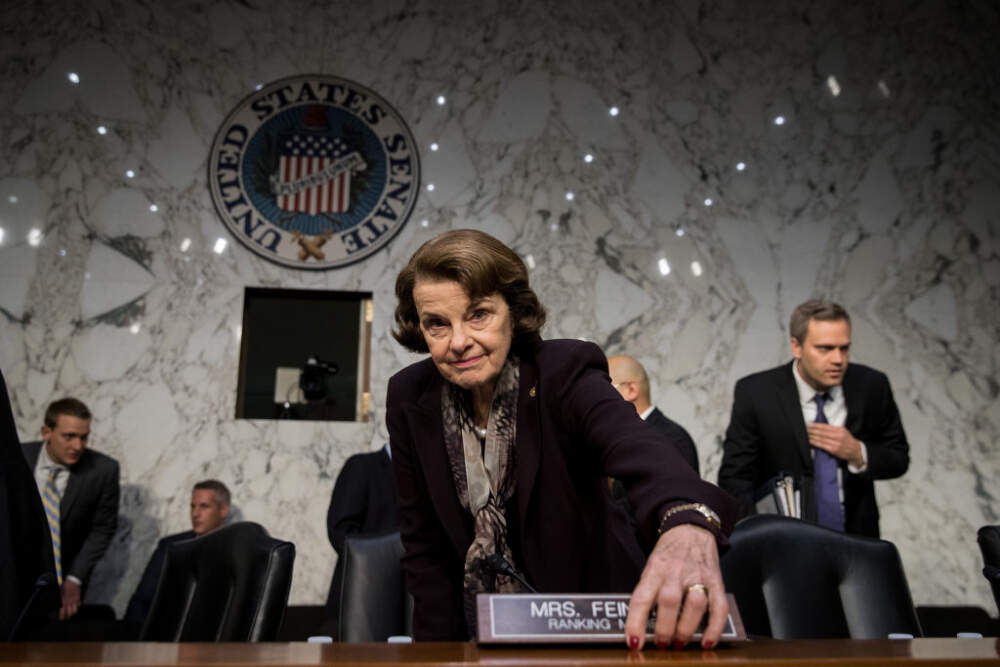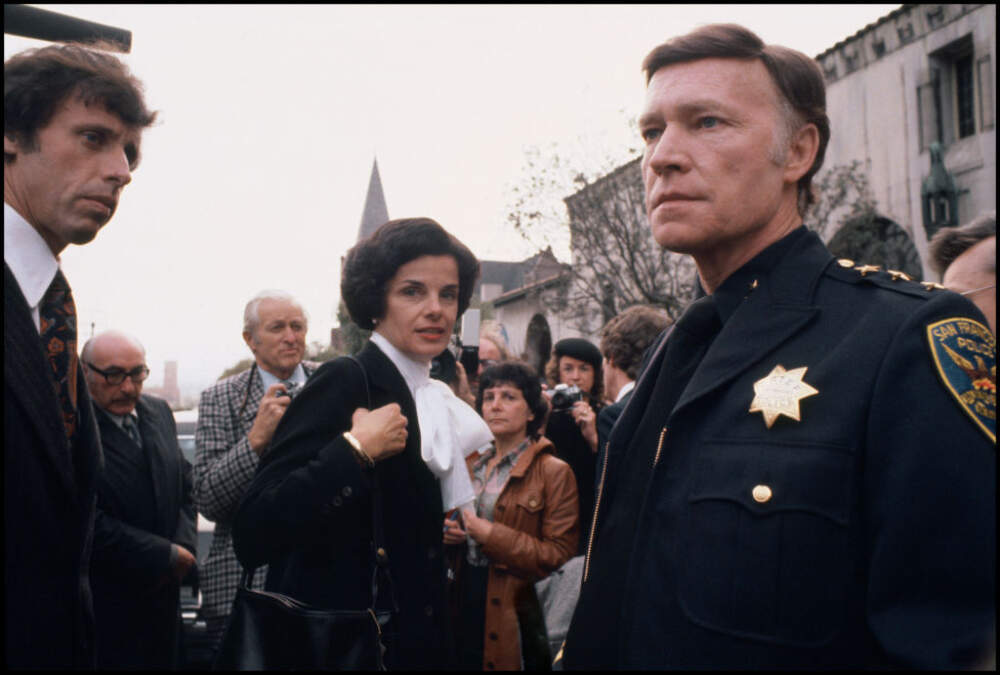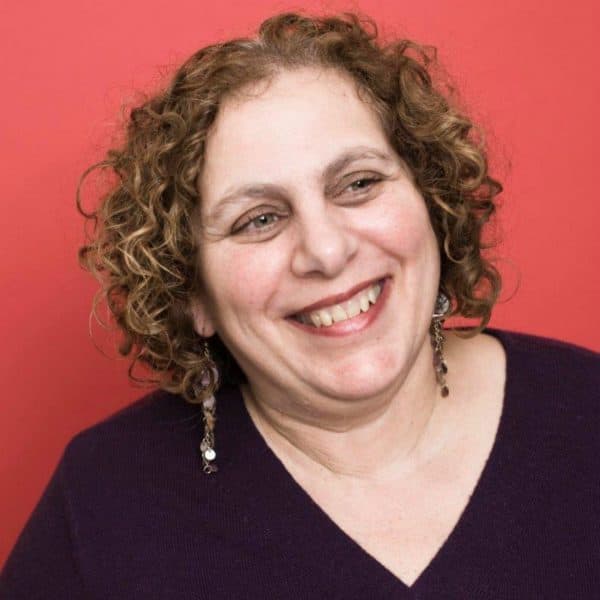Advertisement
Commentary
How we should remember Dianne Feinstein

In 2019, a group of young people — some of them still children — presented Sen. Dianne Feinstein with a petition to adopt the Green New Deal. In a widely circulated video, Feinstein rebuffed their request, saying:
“You know what’s interesting about this group? I’ve been doing this for 30 years. I know what I’m doing. You come in here and you say, ‘It has to be my way or the highway.’ I don’t respond to that. I’ve gotten elected, I just ran, I was elected by almost a million-vote plurality and I know what I’m doing. So, you know, maybe people should listen a little bit.”
Her tone was patronizing and dismissive; just as infuriating as her words. I’m no youngster myself, but I remember thinking: “This entrenched fossil has got to go.”
I only just recently went back to hear the rest of her comments to those young climate activists; the portion of her remarks that didn’t go viral. She spoke slowly to the earnest gathering, explaining that the resolution couldn’t be paid for and wouldn’t pass in the Senate. Then she held up a document that she identified as her own climate resolution — one that she thought could be passed — and promised to distribute it to them.
That additional context didn’t soften my view of Feinstein’s response as smug and complacent about the most urgent, existential issue of our time. But it did force me into a more nuanced view of this former San Francisco city supervisor, mayor and U.S. Senator.
Pragmatic but committed to certain values, dogged but (until recently) nimble, she embodied the paradox of the historically successful American politician.
Dianne Feinstein’s initial foray into politics was unremarkable at best. In 1960, based on a report on criminal justice that she’d written while an intern for the Coro Foundation in the San Francisco District Attorney’s office just after her graduation from Stanford, Edmund G. “Pat” Brown, the governor of California, offered her a $600-per-month post on the state parole board for women. Newly divorced and a single mother, she gladly accepted.

She served on the board for six years. That experience, which gave her first-hand exposure to incarcerated women, seemed to shape Feinstein’s unlikely package of positions — pro-choice, pro-death penalty, pro- “law and order,” and pro-gun control — that would go on to brand her as a rather iconoclastic centrist. Those views were further solidified in 1978 when, as president of the San Francisco Board of Supervisors, Feinstein rushed to the aid of Harvey Milk, only moments after he and San Francisco Mayor George Moscone, were shot and killed by a disgruntled and homophobic former city employee.
From 1978 to 1988 she served as San Francisco’s mayor. Though re-elected twice, her tenure was marked by controversy. In 1983 she survived a recall drive initiated by opponents of the city’s brief but pioneering ban on handguns. And as the New York Times observed in a piece chronicling key moments in her career:
“… leading from the center cost her. Gay rights advocates praised her support of programs to fight AIDS and protect employment and housing, but were infuriated when she vetoed early domestic partner legislation that conservatives opposed. Women’s groups touted the city’s first female mayor, but complained that she refrained from identifying herself closely with the movement. A refurbishment of the cable car system won applause, but a downtown construction boom led critics to accuse her of being too pro-business.”
But the politically savvy Feinstein embraced this love/hate relationship with practically every faction of her constituency. When running against (and narrowly losing to) Pete Wilson for California governor in 1990, her campaign ran ads that not only featured her taking charge after the Moscone and Milk assassinations, but being booed at the state Democratic Party convention while declaring her support for capital punishment. She recognized that being occasionally reviled by one’s own party is the best way to demonstrate independence.
That sometimes unconventional pragmatism is what both enabled and undermined her greatest legislative accomplishments. In 1994, after being elected to the U.S. Senate two years earlier, Feinstein took the lead in writing and winning passage of what she herself considered to be a watered-down Federal Assault Weapons Ban. The bill passed with 91 votes, but only after it exempted 650 specific high-powered rifles and shotguns, and came with an expiration date of 2004 unless it was renewed by Congress.
As the countless mass shooting deaths in the past two decades testify, it wasn’t. But to her great credit, Feinstein never abandoned that fight, trying and failing yet again in 2022 to get the ban reinstated.
Just as she’d delivered mixed messages to the LGBTQ community early in her career, championing non-discrimination and funding for AIDS research but vetoing domestic partnership legislation, she was similarly ambivalent about the CIA. As a member of the Senate Intelligence Committee, she’d championed the agency’s goals and methods (including domestic surveillance). But upon learning about the scope and severity of the CIA’s illegal, immoral and ineffective use of torture in the years after 9/11, she relentlessly fought for the release of a damning indictment of the agency, the 2014 “Torture Report.”
After 30 years in the U.S. Senate, Feinstein did indeed know what she was doing. In being willing to be both friend and foe to numerous causes and constituencies, to take each case on its merits and striving to solve the immediate problem at hand, she exemplified an approach to governance that’s not only dead, but unlikely to be resurrected.
I fear that we have come to the point in our nation’s development where leading from the middle, as Feinstein did, is not only impossible but undesirable. Our problems — most notably climate change and income inequality — are simply too big and too urgent to be addressed by diluted non-solutions which, in granting a little something to everyone, result in nothing.
But in her willingness to defy stereotypes, to blaze new trails as a woman and as a stubbornly moderate Democrat in an increasingly polarized era, Feinstein has left a singular legacy.
We do her and ourselves a disservice if we remember only the failing, memory-impaired figure of the past couple of years. Her career is marked by conviction, tenacity, and a willingness to live with compromise. As we seem to live under constant threat these days of a government shutdown, political paralysis and self-serving acrimony, these are qualities that we as a nation desperately need in our leaders and ourselves.

